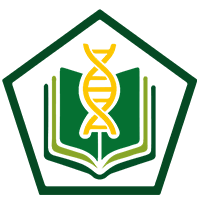Multi-locus Barcoding and Phylogeny of Coelogyne and Dendrochilum Species in Mt. Talomo, Philippines
DOI:
https://doi.org/10.52751/cmujs.2025.v1.t1jjf441Keywords:
Coelogyne , DNA Barcoding, ITS, matK, Mindanao EndemicAbstract
DNA barcoding is a vital tool for species identification, effectively complementing traditional morphological approaches, particularly within complex and diverse plant families like Orchidaceae. This study focused on the ten orchid accessions collected from Mt. Talomo, Mindanao, to evaluate the efficacy of employing four barcode loci (rbcL, matK, ITS, trnH-psbA) for precise molecular and taxonomic resolution. DNA extraction, PCR amplification, and Sanger sequencing were performed, with sequences assembled and analyzed using BioEdit, Geneious®, and MEGA12. BLAST comparisons against NCBI confirmed species identities. Results showed that while molecular barcoding generally aligns with morphological classification, the combined matK gene and the nuclear ribosomal ITS region significantly resolved species- and genus-level distinctions. Specifically, matK provided high resolution with several matches showing 100% identity in GenBank, while the ITS region demonstrated superior discriminatory power due to its greater sequence variability, proving highly effective in distinguishing closely related species. Out of ten, nine gave DNA sequences that identified them as Coelogyne or Dendrochilum species. Only three were identified at the species level: This synergistic effect of matK and ITS was instrumental in resolving the identities of Coelogyne species, including the Philippine-endemic Coelogyne coccinea and Coelogyne apoensis, and the native Coelogyne glumacea, all of which face threats from habitat loss and overcollection.
Phylogenetic analysis, particularly using combined matK and ITS sequences, revealed clear barcoding gaps and well-resolved monophyletic clusters for conspecifics. These results underscore the critical role of these combined markers for accurate species identification and advocate for an expanded DNA barcode library to support targeted conservation efforts for Mindanao’s unique and threatened orchid flora.
Downloads
References
Zhang S-B, Chen W-Y, Huang J-L, Bi Y-F, Yang X-F (2015) Orchid Species Richness along Elevational and Environmental Gradients in Yunnan, China. PLoS ONE 10(11): e0142621. https://doi.org/10.1371/journal.pone.
Chase, M. W., Cameron, K. M., Freudenstein, J. V., Pridgeon, A. M., Salazar, G., van den Berg, C., & Schuiteman, A. (2015). An updated classification of Orchidaceae, Botanical Journal of the Linnean Society, Volume 177, Issue 2, February 2015, Pages 151–174, https://doi.org/10.1111/boj.12234
Cootes, J. (2011). Philippine Native Orchid Species Katha Publishing, Philippines.
Pelser, P.B., Barcelona, J.F. & Nickrent, D.L. (2011 onwards) Co’s Digital Flora of the Philippines. Available from: http://www.philippineplants.org (Accessed 25 Aug. 2022).
Naive, M. A., Boos, R., De Leon, M. D. & Cootes, J. (2017). Two new Dendrochilum (Orchidaceae) species from Mindanao, Philippines. Orchideen Journal, 24, 56-60.
Global Forest Watch (2021) Global Deforestation Rates & Statistics by Country. GFW. https://www.globalforestwatch.org/dashboards/country/KEN
Barcelona, J.F, Nickrent, D.L., Callado J. R, & Pelser, P. (2013). Co’s Digital Flora of the Philippines: plant identification and conservation through cybertaxonomy. Philippine Journal of Science. 142. 57-67.
Gutierrez, Rosa. (2010). Orchids: A review of uses in traditional medicine, its phytochemistry and pharmacology. Journal of medicinal plant research. 4. 592-638.
Castillo-Pérez, L. J., Ponce-Hernández, A., Alonso-Castro, A. J., Solano, R., Fortanelli-Martínez, J., Lagunez-Rivera, L., & Carranza-Álvarez, C. (2024). Medicinal Orchids of Mexico: A Review. Pharmaceuticals (Basel, Switzerland), 17(7), 907. https://doi.org/10.3390/ph17070907
Shukla, M. K., Monika, Thakur, A., Verma, R., Lalhlenmawia, H., Bhattacharyya, S., Bisht, D., Singh, A., Parcha, V., & Kumar, D. (2022). Unravelling the therapeutic potential of orchid plant against cancer. South African Journal of Botany, 150, 69–79. https://doi.org/10.1016/j.sajb.2022.07.005
Wati, R. K., de Graaf, E. F., Bogarín, D., Heijungs, R., van Vugt, R., Smets, E. F., & Gravendeel, B. (2021). Antimicrobial Activity of Necklace Orchids is Phylogenetically Clustered and can be Predicted With a Biological Response Method. Frontiers in pharmacology, 11, 586345. https://doi.org/10.3389/fphar.2020.586345
Hebert, P. D., & Gregory, T. R. (2005). The promise of DNA barcoding for taxonomy. Systematic biology, 54(5), 852–859. https://doi.org/10.1080/10635150500354886
CBOL Plant Working Group (2009). A DNA barcode for land plants. Proceedings of the National Academy of Sciences of the United States of America, 106(31), 12794–12797. https://doi.org/10.1073/pnas.0905845106
Li, Y., Tong, Y., & Xing, F. (2016). DNA Barcoding Evaluation and Its Taxonomic Implications in the Recently Evolved Genus Oberonia Lindl. (Orchidaceae) in China. Frontiers in plant science, 7, 1791. https://doi.org/10.3389/fpls.2016.01791
Kim, H. M., Oh, S. H., Bhandari, G. S., Kim, C. S., & Park, C. W. (2014). DNA barcoding of Orchidaceae in Korea. Molecular ecology resources, 14(3), 499–507. https://doi.org/10.1111/1755-0998.12207
Xiang, X.G.; Zhang, J.B.; Lu, A.M.; Li, R.Q. (2011). Molecular identification of species in Juglandaceae: A tiered method. J. Syst. Evol. 49, 252–260. https://doi.org/10.1111/j.1759-6831.2011.00116.x
Amoroso, V. B., Coritico, F. P., & Fritsch, P. W. (2016). Species richness and conservation status of ferns and lycophytes in Mt. Hamiguitan Range Wildlife Sanctuary, Davao Oriental, Philippines. Philippine Journal of Science, 142(2), 127–137.
Inda, L. A., Pimentel, M., & Chase, M. W. (2012). Phylogenetics of tribe Orchideae (Orchidaceae: Orchidoideae) based on combined DNA matrices: inferences regarding timing of diversification and evolution of pollination syndromes. Annals of botany, 110(1), 71–90. https://doi.org/10.1093/aob/mcs083
Lahaye, R., van der Bank, M., Bogarin, D., Warner, J., Pupulin, F., Gigot, G., Maurin, O., Duthoit, S., Barraclough, T. G., & Savolainen, V. (2008). DNA barcoding the floras of biodiversity hotspots. Proceedings of the National Academy of Sciences of the United States of America, 105(8), 2923–2928. https://doi.org/10.1073/pnas.0709936105
Hall, T.A. (1999) BioEdit: A User-Friendly Biological Sequence Alignment Editor and Analysis Program for Windows 95/98/NT. Nucleic Acids Symposium Series, 41, 95-98.
FinchTV V1.4, 2006. A Brilliant Trace Viewer. Geospiza, Inc. http://www.geospiza.co m/Products/finchtv.shtml
Geneious® Prime (2025.1.2). http://www.geneious.com
Sayers, E. W., Beck, J., Bolton, E. E., Brister, J. R., Chan, J., Connor, R., Feldgarden, M., Fine, A. M., Funk, K., Hoffman, J., Kannan, S., Kelly, C., Klimke, W., Kim, S., Lathrop, S., Marchler-Bauer, A., Murphy, T. D., O'Sullivan, C., Schmieder, E., Skripchenko, Y., … Pruitt, K. D. (2025). Database resources of the National Center for Biotechnology Information in 2025. Nucleic acids research, 53(D1), D20–D29. https://doi.org/10.1093/nar/gkae979
Altschul, S. F., Gish, W., Miller, W., Myers, E. W., & Lipman, D. J. (1990). Basic local alignment search tool. Journal of molecular biology, 215(3), 403–410. https://doi.org/10.1016/S0022-2836(05)80360-2
Stamatakis A. (2014). RAxML version 8: a tool for phylogenetic analysis and post-analysis of large phylogenies. Bioinformatics (Oxford, England), 30(9), 1312–1313. https://doi.org/10.1093/bioinformatics/btu033
Chase, M. W., Salamin, N., Wilkinson, M., Dunwell, J. M., Kesanakurthi, R. P., Haider, N., & Savolainen, V. (2005). Land plants and DNA barcodes: short-term and long-term goals. Philosophical transactions of the Royal Society of London. Series B, Biological sciences, 360(1462), 1889–1895. https://doi.org/10.1098/rstb.2005.1720
Kress, W. J., & Erickson, D. L. (2007). A two-locus global DNA barcode for land plants: the coding rbcL gene complements the non-coding trnH-psbA spacer region. PloS one, 2(6), e508. https://doi.org/10.1371/journal.pone.0000508
Lau, D. T., Shaw, P. C., Wang, J., & But, P. P. (2001). Authentication of medicinal Dendrobium species by the internal transcribed spacer of ribosomal DNA. Planta medica, 67(5), 456–460. https://doi.org/10.1055/s-2001-15818
Parveen, I., Singh, H. K., Malik, S., Raghuvanshi, S., & Babbar, S. B. (2017). Evaluating five different loci (rbcL, rpoB, rpoC1, matK, and ITS) for DNA barcoding of Indian orchids. Genome, 60(8), 665–671. https://doi.org/10.1139/gen-2016-0215
Asahina, H., Shinozaki, J., Masuda, K., Morimitsu, Y., & Satake, M. (2010). Identification of medicinal Dendrobium species by phylogenetic analyses using matK and rbcL sequences. Journal of natural medicines, 64(2), 133–138. https://doi.org/10.1007/s11418-009-0379-8
Feng, S., Jiang, Y., Wang, S., Jiang, M., Chen, Z., Ying, Q., & Wang, H. (2015). Molecular Identification of Dendrobium Species (Orchidaceae) Based on the DNA Barcode ITS2 Region and Its Application for Phylogenetic Study. International Journal of Molecular Sciences, 16(9), 21975-21988. https://doi.org/10.3390/ijms160921975
Raskoti, B. B., & Ale, R. (2021). DNA barcoding of medicinal orchids in Asia. Scientific Reports, 11(1). PMID: 34880330; PMCID: PMC8654824. https://doi.org/10.1038/s41598-021-03025-0
Ho, V. T., Tran, T. K. P., Vu, T. T. T., & Widiarsih, S. (2021). Comparison of matK and rbcL DNA barcodes for genetic classification of jewel orchid accessions in Vietnam. Journal, genetic engineering & biotechnology, 19(1), 93. https://doi.org/10.1186/s43141-021-00188-1.
Tsaballa, A., Kelesidis, G., Krigas, N., Sarropoulou, V., Bagatzounis, P., & Grigoriadou, K. (2023). Taxonomic Identification and Molecular DNA Barcoding of Collected Wild-Growing Orchids Used Traditionally for Salep Production. Plants (Basel, Switzerland), 12(17), 3038. https://doi.org/10.3390/plants12173038
Gravendeel, B., Chase, M. W., de Vogel, E. F., Roos, M. C., Mes, T. H., & Bachmann, K. (2001). Molecular phylogeny of Coelogyne (Epidendroideae; Orchidaceae) based on plastid RFLPS, matK, and nuclear ribosomal ITS sequences: evidence for polyphyly. American journal of botany, 88(10), 1915–1927. https://doi.org/10.2307/3558367
Kok Hon, Y., Yong, C. S., Abdullah, J. O., & Go, R. (2020). Development of species-specific SCAR markers for identification and authentication of three rare Peninsular Malaysian endemic Coelogyne (Orchidaceae) orchids. F1000Research, 9, 1161. https://doi.org/10.12688/f1000research.26170.2













 LinkedIn
LinkedIn